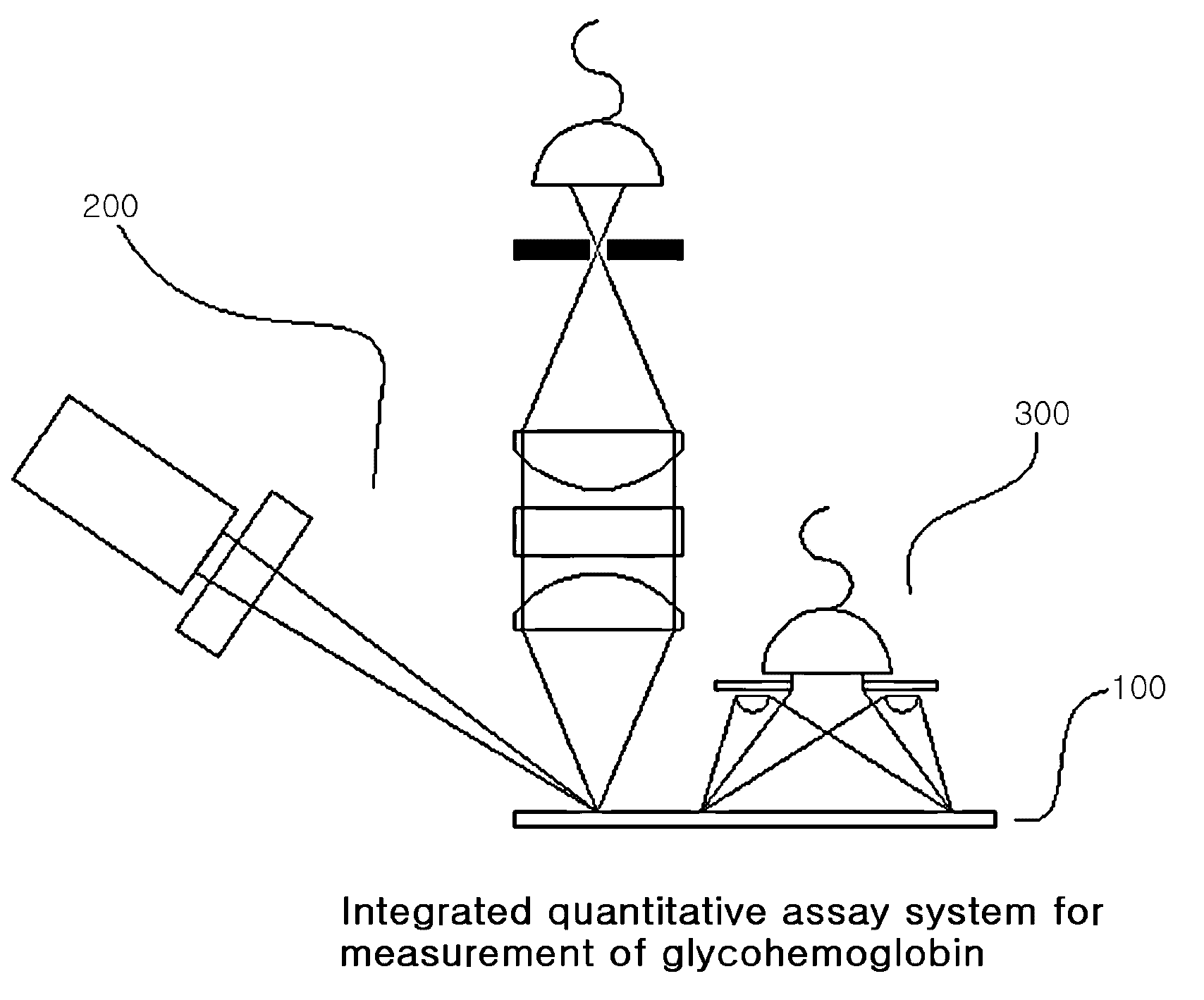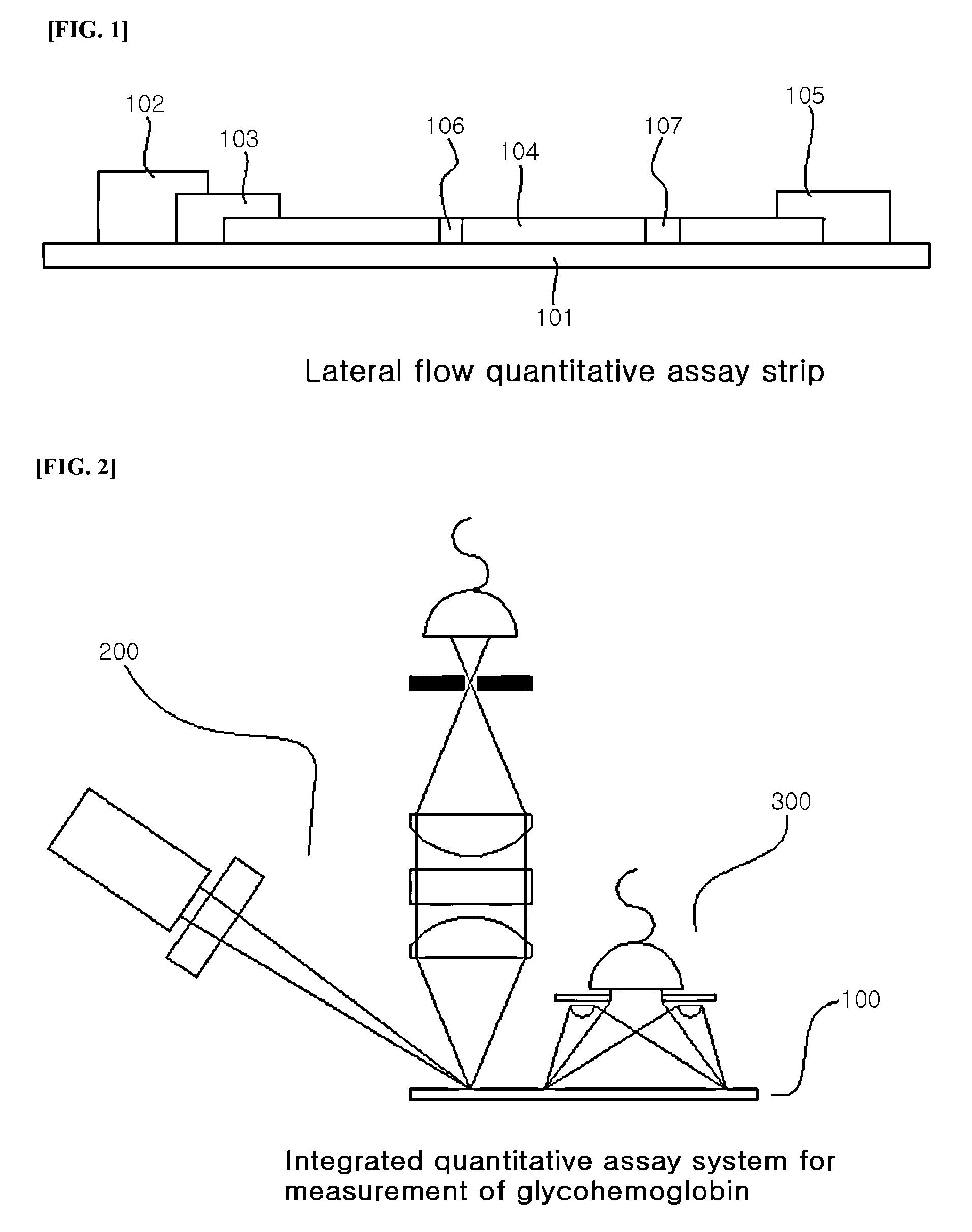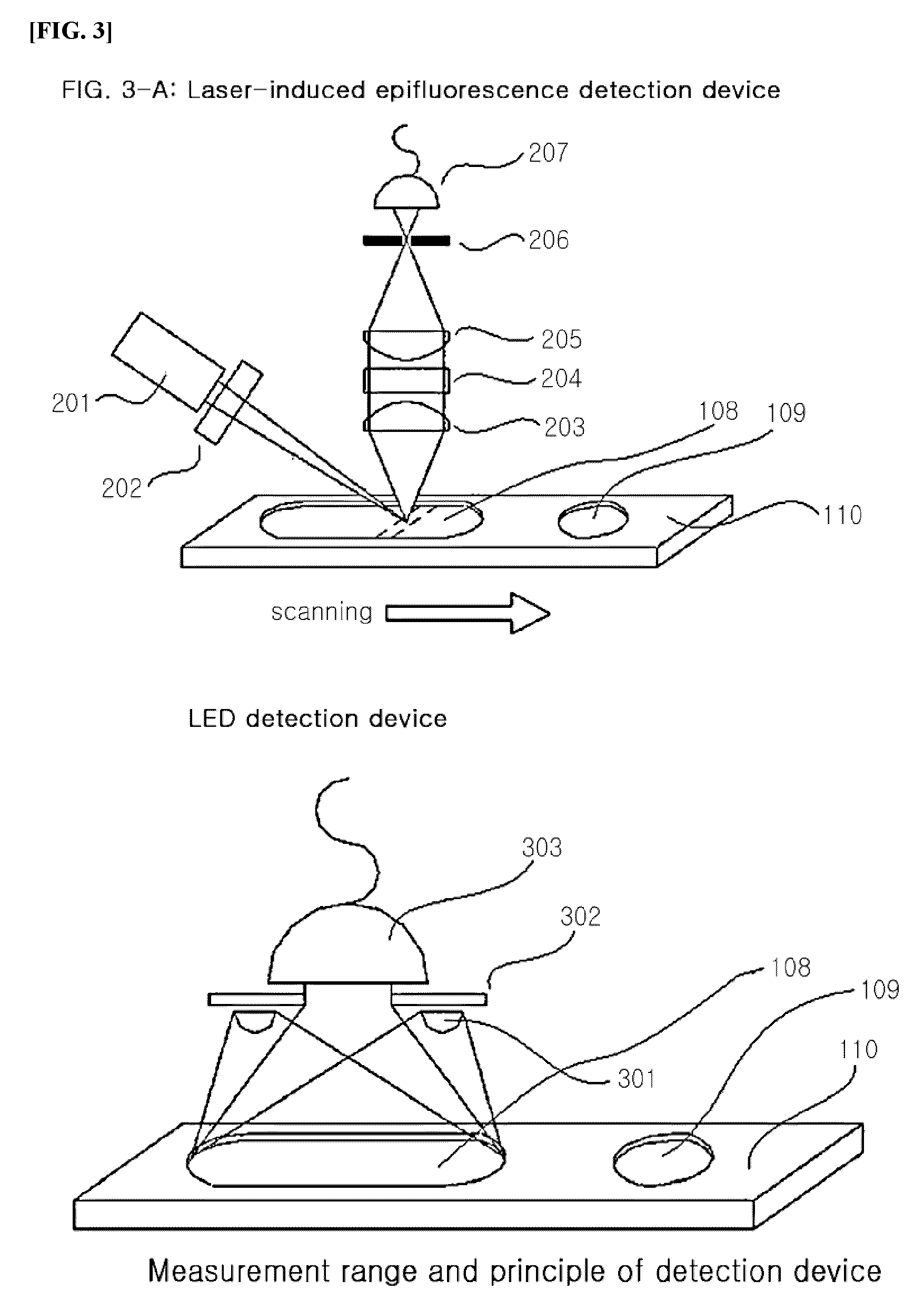System for quantitative measurement of glycohemoglobin and method for measuring glycohemoglobin
a quantitative measurement and glycohemoglobin technology, applied in the field of quantitative measurement of glycohemoglobin and glycohemoglobin measurement system, can solve the problems of difficult practice, many complications, and inability to reliably diagnose urine glucos
- Summary
- Abstract
- Description
- Claims
- Application Information
AI Technical Summary
Benefits of technology
Problems solved by technology
Method used
Image
Examples
example 1
Preparation of Protein-Fluorescent Material Conjugate
[0111]A fluorescent material as a signal generating source was ligated to the mouse monoclonal antibody against an antigen analyte of interest, glycohemoglobin (HbA1c), as follows. Proteins to be used in binding of the fluorescent material were purified to a purity of at least 95%. The proteins were used at a concentration of at least 1 mg / ml for optimal binding. The purified proteins were dialyzed against a buffer solution (0.1 M sodium bicarbonate, pH 8.5) not containing ammonia or amine ions in a refrigerator at 4° C. for 12 to 24 hours in order to facilitate the reaction with the fluorescent material. The proteins dialyzed were kept in a freezer at −20° C. until use. The proteins dialyzed in the buffer solution were directly but slowly added to powdered Alexa 647 fluorescent material (Molecular Probes, USA) and the mixture was stirred for 1 to 2 hours in a refrigerator at 4° C.
example 2
Purification of Protein-Fluorescent Material Conjugate
[0112]Excess fluorescent material that did not react with the protein / fluorescent material conjugate was removed using a distribution column packed with Sephadex G-25. As a purifying buffer solution, 0.1 M sodium carbonate (pH 8.5) was used. The purified protein / fluorescent material conjugates were kept in a refrigerator or -20° C. freezer until use.
example 3
Immobilization of Captor on Nitrocellulose Membrane
[0113]The captor, HbA1c was immobilized on a nitrocellulose membrane in a thin line shape using a Biodot dispenser while varying the concentration and amount. The membrane with immobilized proteins was stored in a dehumidifier kept at 25° C. and a humidity of 35 to 50% for 2 hours. Then, in order to stabilize the protein and prevent non-specific reactions between reagents, the membrane was treated with a stabilizing solution (1% BSA, 0.05% Tween20, 1% sucrose, 0.1% PVA) and equilibrated for 5 minutes. As the components of the stabilizing solution, BSA may be substituted with gelatin, Tween 20 may be substituted with Triton X-100, sucrose may be substituted with trehalose, PVA (polyvinylalcohol) may be substituted with PEG or PVP (polyvinylpyrrolidone). After removing excess solution, the membrane was dried at 40° C. for 30 minutes. The dry membrane was stored in an appropriate container kept at 25° C. and RH of 35 to 50% until use.
PUM
| Property | Measurement | Unit |
|---|---|---|
| pH | aaaaa | aaaaa |
| concentration | aaaaa | aaaaa |
| pH | aaaaa | aaaaa |
Abstract
Description
Claims
Application Information
 Login to View More
Login to View More - R&D
- Intellectual Property
- Life Sciences
- Materials
- Tech Scout
- Unparalleled Data Quality
- Higher Quality Content
- 60% Fewer Hallucinations
Browse by: Latest US Patents, China's latest patents, Technical Efficacy Thesaurus, Application Domain, Technology Topic, Popular Technical Reports.
© 2025 PatSnap. All rights reserved.Legal|Privacy policy|Modern Slavery Act Transparency Statement|Sitemap|About US| Contact US: help@patsnap.com



